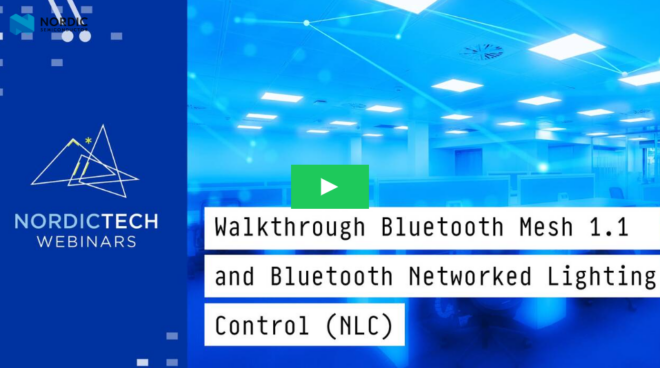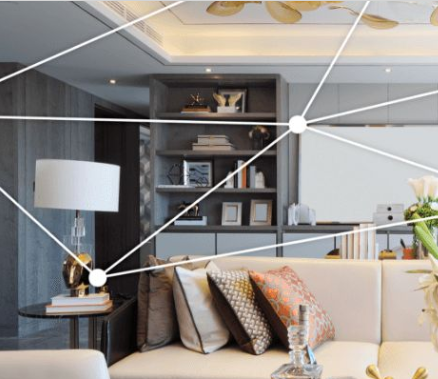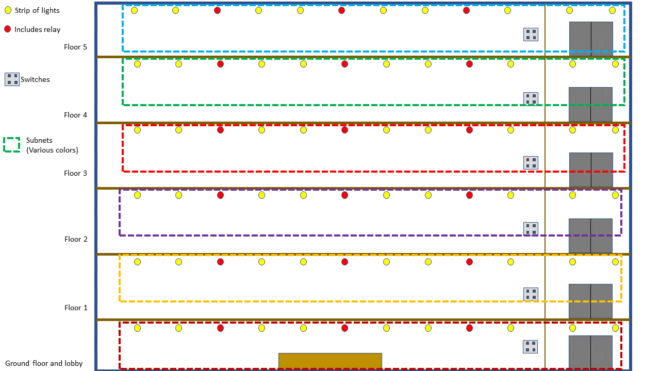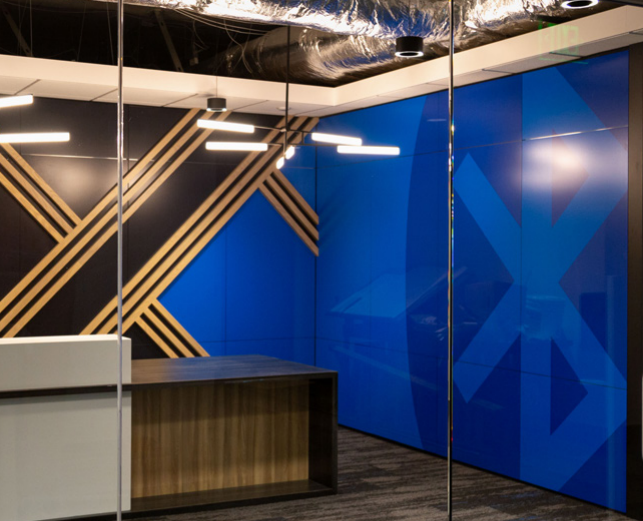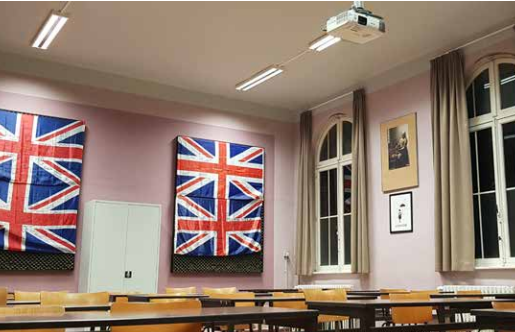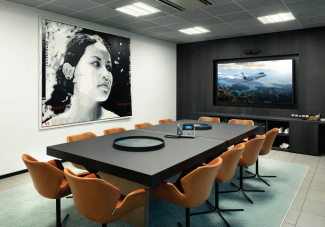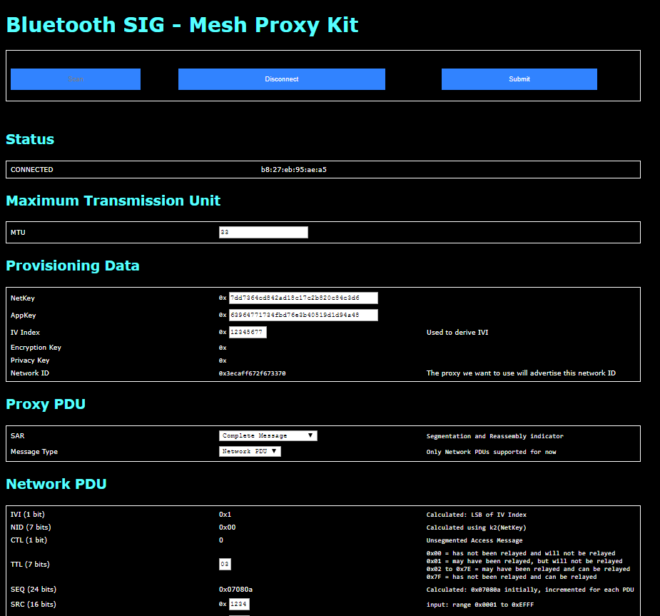Bluetooth® Mesh continues to prove itself as the most effective and user-friendly wireless technology for professional lighting applications. Still, there are many misconceptions regarding this global standard and its wireless capabilities. Let’s see what myths keep surrounding it and what it really offers to lighting designers.
![]()
Navigating the Bluetooth® technology landscape is not easy unless you have been following its development very closely over recent years. Originally designed as a short-range cable replacement technology for connecting computer peripherals, Bluetooth technology has evolved along with the rapid technological progress of the past two decades. Over time, several different flavors of Bluetooth technology have emerged, each suited for different short-range applications. In certain segments, such as audio transmission or wearables, just about everything today runs on Bluetooth technology. The Bluetooth Special Interest Group (SIG) has a proven track record in delivering global standards that both manufacturers and customers can rely on. What does it mean in practice? If you are looking for a mobile headset, you can grab any Bluetooth enabled headset off the store shelf without having to wonder whether it will work with your mobile phone. You just know it will. This might seem obvious to today’s customers, but it did not happen by itself. It is a result of precise and transparent specifications, rigid certification procedures, and an ongoing effort of the leading technology companies contributing to the Bluetooth SIG. By standardizing the mesh topology, the organization aimed to bring this ease of use and global interoperability to more challenging applications, such as connected lighting and building automation. Introducing a new global standard to the market is a difficult and lengthy process, but it’s not the first time for the Bluetooth SIG. Things are progressing fast, and what we’re observing right now might be the beginning of the dominance of Bluetooth technology in the lighting industry.
State of Wireless
Bluetooth® Mesh is the only wireless standard that provides a fully decentralized architecture without a single point of failure.
So, what can Bluetooth Mesh lighting control networks do today? Quite a lot. Wireless controls have reached a level of maturity that finally allows for reliable and no-compromise operation in the most demanding professional lighting applications. Non-disruptive retrofits, drastically simplified commissioning, and enormous configuration flexibility have finally become a real thing — and with the open nature of the Bluetooth Mesh networking standard, these benefits are available to lighting professionals all around the globe.
This is evidenced by multiple real-life implementations from the last year. As a provider of Bluetooth Mesh lighting control firmware and commissioning tools, at Silvair, we had the privilege of watching the first wave of projects as they happened. From small pilot undertakings to large-scale commercial deployments, we saw how our partners’ products enable clean and non-disruptive retrofitting of obsolete installations into flexible wireless control systems. To give you an idea of how versatile Bluetooth Mesh lighting controls can be, let’s have a look at these examples:
- Yamaha Motor Corporation warehouse in Pleasant Prairie, U.S.
At its vast engine warehouse, Yamaha did a smooth upgrade from full-on luminaires to an efficient, occupancy-aware lighting control system. Bluetooth® Mesh connectivity was provided via smart occupancy sensors. A total of 320 such devices were deployed, one for each high bay fixture inside the warehouse.
A complete lighting retrofit was carried out over a single weekend. Without any office downtime, the company upgraded to LEDs, deployed a 360-node Bluetooth Mesh lighting control network, and used our commissioning tools to set up a sensor-driven control system with occupancy sensing and daylight harvesting.
At Central Alberta’s largest trade show, agriculture, entertainment, and sports facility, Bluetooth Mesh luminaries today illuminate more than 120,000 sq. feet across several pavilions. No sensors are involved, as the managers only wanted reliable manual controls. This was provided via wireless energy harvesting switches from EnOcean.
Following the launch of its Bluetooth® Mesh -based HubSense system, OSRAM used HubSense to upgrade the lighting at its Garching office. The retrofit took less than two days with no drilling or cables involved. The control strategies deployed at the office included occupancy sensing, daylight harvesting, and manual control.
Stratosphere Tower is the city’s signature attraction and the tallest freestanding observation tower in the U.S. Its indoor observation deck located on the 108th floor was remodeled in July 2019. When the managers later decided to modernize the lighting as well, they wanted an easy way to create independent lighting scenes without having to wire in a control system. Bluetooth Mesh lighting controls met these requirements exceptionally well, while not causing any disruption in the already remodeled space.
In addition to the applications mentioned above, we saw Bluetooth® Mesh controls deployed on both sides of the Atlantic in many other types of facilities, including parking garages, museums, and schools. The new standard is extremely versatile, delivering different types of benefits in different environments. Easy retrofitting, flexible control, and energy savings are the biggest selling points at this moment, but the potential is much bigger with all the data-driven services that can be provided via Bluetooth lighting networks.
![]()
FEATURED DOWNLOAD
Inside a Bluetooth Mesh Lighting Network – A Comprehensive Guide for Lighting Manufacturers
The Myths
Some might have a hard time believing that…wire-like reliability is achievable in wireless control.
That said, there are still many misconceptions regarding the current state of the Bluetooth® Mesh standard and its capabilities. This might be caused by the fact that there are several Bluetooth flavors out there, with Bluetooth Mesh being only one of them. Also, the lighting industry has been chasing the IoT dream for about a decade now. And there has been a fair amount of disappointment involved. The lighting control part turned out to be more difficult than expected, and it took years for the technology industry to work out a solution that would meet professional lighting requirements. After all this time, some might have a hard time believing that the wait is over and that wire-like reliability is achievable in wireless control. The best way to get up to date with Bluetooth mesh is to see it in action, which I strongly recommend to all lighting designers. In the meantime, let’s deconstruct some of the most common myths concerning this global standard.
Myth #1: Bluetooth Mesh networking is an outlier technology that hasn’t been adopted by major companies or used in major installations.
Neither part is true. While Bluetooth® Mesh networking is still closer to the beginning of the technology adoption curve (probably somewhere between innovators and early adopters), some of the industry’s biggest manufacturing brands have already launched qualified Bluetooth Mesh products. These include Osram, Zumtobel, and ERP Power. But qualified components from smaller manufacturers are also already on the market. With its open nature, the qualified Bluetooth mesh ecosystem is just as welcoming for regional producers as for global heavyweights. There is no need to launch an entire product line. Instead, smaller manufacturers can launch just one Bluetooth mesh component — e.g., a sensor, driver, or fixture controller — and it is going to work with other Bluetooth SIG-qualified components available on the market. What is interesting is that any of the mentioned components can be used to upgrade an existing installation to wireless controls on its own. You don’t need to have Bluetooth mesh drivers, Bluetooth mesh sensors, and Bluetooth mesh controllers to build a Bluetooth mesh lighting control system. Just pick a type of component that suits your project best and use it to deliver Bluetooth mesh connectivity to standard LED luminaires.
As for commercial projects, there are hundreds of them already completed or underway, both across Europe and the U.S. The numbers alone might still not be overwhelming, but global technology adoption always takes time. First, specifications must be published. Then, manufacturers need to build their components and introduce them to the market. Then again, it takes time before real-life projects can be launched that involve such products. Considering that the Bluetooth Mesh standard was adopted two and a half years ago, the progress is fast, and it keeps accelerating.

Myth #2: Bluetooth Mesh networking is not a good choice for large spaces.
With its decentralized architecture, high data rate, and ultra-compact radio messages, Bluetooth® Mesh networking is the only global wireless standard that can handle large spaces. One of the techniques it uses to support large-scale installations is the concept of subnets. It allows for dividing the network into multiple smaller networks (e.g., a subnet per floor), while still maintaining a full-building coverage for maintenance and configuration purposes.
Myth #3: The range of Bluetooth technology is a prohibitive factor.
Though there’s a misperception that Bluetooth® technology is strictly a short-range communication technology, it is true that there are certain limits when it comes to node-to-node communication. However, following the introduction of the mesh topology, a Bluetooth lighting control network can cover an entire building. This is because any node can pass messages to other nodes. The ubiquity of the lighting infrastructure within the built environment helps maintain effective communication because network nodes are wherever the lights are — in every room, corridor, etc. At Silvair, we have assisted our partners in multiple pilot and commercial projects, and there hasn’t been a single case where node-to-node range was an issue.
Myth #4: Bluetooth Mesh networking is still susceptible to a single-point-of-failure problem.
In fact, Bluetooth® Mesh is the only wireless standard that provides a fully decentralized architecture without a single point of failure. First, it doesn’t need any network gateways. Even when commissioning a network, you don’t need any gateway devices, because the Bluetooth radio is already in every smartphone on the market. As long as you have an appropriate commissioning app, you can set up the network directly from your smartphone. Second, a Bluetooth mesh lighting network doesn’t use a central control box known from wired installations. Instead, it puts a software controller into each luminaire. The luminaires themselves become intelligent and form a complete control system without the need for a central control box. This, along with its information-centric architecture and unique radio transmission capabilities, is what allowed Bluetooth mesh networking to solve the three pain points of wireless lighting control: simplicity, scalability, and reliability.
Myth #5: The Bluetooth Mesh ecosystem locks-in manufacturers like any other proprietary system.
Unlike proprietary technologies, Bluetooth® Mesh networking is open to all chipmakers, software developers, and lighting manufacturers. It is not anyone’s product or property. Instead, it’s a globally known brand governed by the Bluetooth SIG organization – the same that has successfully overseen Bluetooth technology for the past 20 years. Everyone can join and contribute. All specifications are publicly available.
![]()
Different Shades of Blue
Standards have always been a catalyst for progress, creating new markets, and driving the widespread adoption of technological innovation.
While navigating the Bluetooth technology landscape is not an easy task, what makes it even more difficult is the fact that there are proprietary lighting control solutions on the market that use the Bluetooth radio while not being compliant with the Bluetooth Mesh specification. With the growing popularity of the Bluetooth Mesh standard, they sometimes refer to themselves as Bluetooth Mesh solutions. But they have very little in common with the standard itself. Their architecture is not publicly available, so their reliability in terms of network communication or security cannot be verified. They can’t communicate with qualified Bluetooth Mesh devices because they don’t follow the strict specification guidelines. Finally, their users fully depend on a particular system provider. If such a company goes bankrupt or a given product line is discontinued, the customers are left with nothing, because no other company can provide compatible components. This is why standards matter so much. They have always been a catalyst for progress, creating new markets, and driving the widespread adoption of technological innovation. They bring freedom of choice, transparency, and security that can never be reached by proprietary technologies. And, what is perhaps most important, only standards can create globally interoperable ecosystems where devices from different manufacturers work with each other out of the box without the need to sign any agreements or make special arrangements between manufacturers. This is the beauty of open standards, and this is what Bluetooth mesh networking is all about.
The Future
Having achieved an outstanding level of reliability in wireless controls, we should now ask ourselves: what’s next? The answer is data, and it’s hardly surprising. Asset tracking, predictive maintenance, space utilization, indoor navigation —these features have been the talk of the town before we even realized how challenging wireless control is. Having figured out how to deal with it, we can now start figuring out what to do with the data and how to monetize it. Found in every smartphone on the market, Bluetooth technology happens to be perfectly positioned to deliver innovative data-driven services directly to end users. It’s going to take a while before some of them arrive in a final and complete shape, but they are down the road. And they are expected to unlock the biggest value of connected lighting. The 3-30-300 rule explains why changes to the human experience have the greatest impact on real estate costs. A building-wide sensor infrastructure that accompanies wireless lighting control systems is a natural starting point for applying that rule to our workplaces and moving towards truly sustainable, human-centric buildings.
![]()
STAY INFORMED
Bluetooth Email Updates
Stay up-to-date on what’s new with Bluetooth, and get the resources you care about, from newly released papers and case studies to developer study guides, videos, and more. Subscribe to receive timely, relevant emails that won’t overfill your inbox.




![shutterstock 1653733096[1]](https://www.bluetooth.com/wp-content/uploads/2024/03/shutterstock_16537330961-660x372.jpg)
![Periodic Advertising with Responses[1]](https://www.bluetooth.com/wp-content/uploads/2024/02/Periodic-Advertising-with-Responses1-660x345.png)




